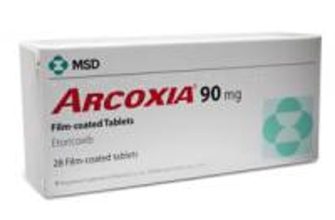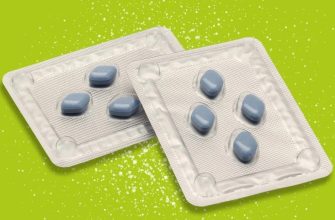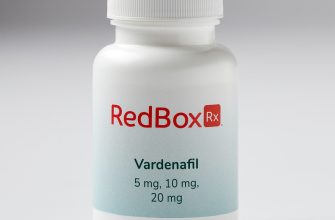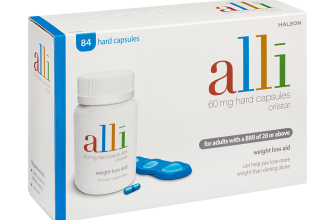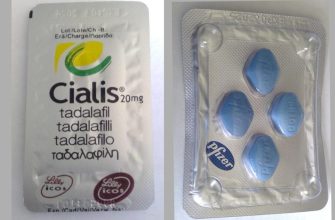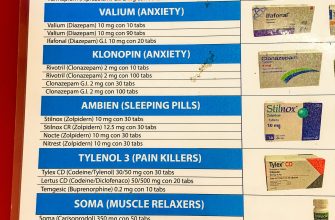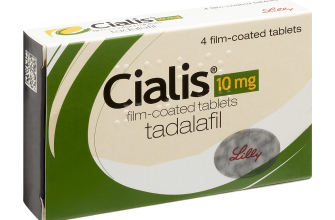Always consult your veterinarian before purchasing or administering any medication, including thyroxine, to your dog. They will perform necessary tests and determine the correct dosage based on your dog’s specific needs and weight. Ignoring this crucial step can lead to health complications.
Once your vet prescribes thyroxine, obtain it from a reputable pharmacy. Many online pharmacies offer convenient delivery, but always verify their legitimacy and licensing before making a purchase. Look for pharmacies with positive reviews and transparent information about their medication sourcing and handling practices. Compare prices from several sources, but prioritize safety and reliability over cost savings.
Proper storage is paramount. Store thyroxine tablets as directed by your vet and the pharmacy’s labeling. Typically, this involves cool, dry storage away from direct sunlight and moisture. Improper storage can significantly reduce the medication’s efficacy. Regularly monitor the expiration date to ensure you always administer fresh medication.
Remember: Administering the correct dosage is critical. Follow your vet’s instructions precisely. Never adjust the dosage yourself without first consulting them. Regular blood tests will help monitor your dog’s response to the medication, allowing your vet to make necessary adjustments to maintain optimal thyroid levels. Your veterinarian is your best resource for all thyroxine-related questions and concerns.
- Buying Dog Thyroxine: A Comprehensive Guide
- Understanding Your Dog’s Hypothyroidism Diagnosis
- Common Symptoms: Recognizing Hypothyroidism
- Treatment and Monitoring: A Long-Term Plan
- Lifestyle Changes: Supporting Your Dog’s Health
- Questions to Ask Your Veterinarian
- Finding a Reputable Veterinarian for Prescription
- Asking the Right Questions
- The Importance of Accurate Dosage and Administration
- Understanding Your Prescription
- Consistent Administration
- Monitoring Your Dog
- Safe Storage
- Choosing a Reliable Source
- Missed Doses
- Exploring Different Forms of Canine Thyroxine
- Tablet Forms
- Liquid Forms
- Other Considerations
- Choosing the Right Form
- Cost Considerations and Potential Savings Strategies
- Storing and Handling Thyroxine Safely
- Monitoring Your Dog’s Response to Treatment
- Observing Your Dog’s Behavior and Physical Changes
Buying Dog Thyroxine: A Comprehensive Guide
Always consult your veterinarian before starting or changing your dog’s medication. They’ll perform blood tests to determine the correct dosage and monitor your dog’s response to treatment.
Obtain a prescription from your vet. This ensures your dog receives the appropriate medication and strength. Never purchase thyroxine without a veterinary prescription.
Choose a reputable pharmacy or online vendor. Check online reviews and verify their licensing and accreditation. Reputable suppliers ensure medication quality and authenticity.
Understand the different forms of thyroxine. Your vet will prescribe either tablets or liquid medication. Tablets are common, but liquid forms may be easier to administer to some dogs.
Store thyroxine correctly. Follow the storage instructions printed on the label. Incorrect storage can affect the medicine’s potency.
Administer the medication as directed by your vet. Consistency is key. Missed doses can disrupt treatment effectiveness. Be prepared to adjust the dose based on your vet’s monitoring.
Monitor your dog’s response to treatment. Regular check-ups with your vet are crucial to ensure the medication is working and to make necessary adjustments.
| Aspect | Recommendation |
|---|---|
| Source | Reputable pharmacy or online vendor with verification. |
| Dosage | Veterinarian-prescribed dosage only. |
| Storage | Follow label instructions meticulously. |
| Administration | Consistent administration as directed by the vet. |
| Monitoring | Regular veterinary check-ups are vital. |
Note that prices vary depending on your location, supplier, and dosage strength. Discuss payment options with your veterinary clinic or pharmacy.
Understanding Your Dog’s Hypothyroidism Diagnosis
Your vet diagnosed your dog with hypothyroidism. This means their thyroid gland isn’t producing enough thyroid hormone. This hormone regulates many bodily functions, including metabolism, heart rate, and digestion. Understanding this diagnosis is key to providing the best care.
Common Symptoms: Recognizing Hypothyroidism
Weight gain is a frequent sign, even with unchanged diet. You might also notice lethargy, a dull coat, and skin problems like dryness or excessive shedding. Changes in behavior, such as increased sleeping or decreased activity, are also possible. Regular veterinary check-ups are vital for early detection.
Treatment and Monitoring: A Long-Term Plan
Treatment usually involves daily thyroxine medication. Your vet will determine the correct dosage, regularly monitoring your dog’s thyroid levels through blood tests. Dosage adjustments are common as your dog’s needs may change over time. These adjustments ensure optimal hormone levels and continued health. Consistency is paramount. Provide medication as directed, precisely. Regular vet visits are vital for ongoing blood work analysis.
Lifestyle Changes: Supporting Your Dog’s Health
Along with medication, a healthy diet and regular exercise contribute to your dog’s overall well-being. Consult your vet for dietary recommendations. A balanced diet supports their response to treatment. Regular, moderate exercise helps maintain muscle mass and energy levels. Closely monitor your dog’s health and immediately report any significant changes to your veterinarian.
Questions to Ask Your Veterinarian
What specific blood tests monitor thyroid levels? How frequently should blood work be done? What are the potential side effects of thyroxine medication? What are the signs of an overdose or underdose? Asking these questions ensures you are fully informed and actively involved in your dog’s care.
Finding a Reputable Veterinarian for Prescription
Start your search by checking online veterinary directories and your local pet community forums. Read reviews carefully, focusing on experiences with prescription management. Consider the veterinarian’s experience with thyroid conditions in dogs; a specialist in endocrinology is ideal. Look for certifications from reputable organizations like the American College of Veterinary Internal Medicine (ACVIM).
Asking the Right Questions
Schedule a brief consultation or phone call before committing. Inquire about their protocols for thyroid testing and medication dispensing. Confirm they offer convenient refill options and clear communication regarding potential side effects and monitoring. Ask about their experience managing hypothyroidism specifically, and whether they’ll work with you on a treatment plan that suits your dog’s needs and your budget. A good veterinarian will welcome your questions and provide thorough, understandable answers.
Confirm their licensing and insurance. Transparency about fees is vital. Choose a vet who values building a strong client-animal relationship–a long-term partnership ensures ongoing care for your dog’s health. A positive, responsive attitude from staff should be a reassuring sign.
The Importance of Accurate Dosage and Administration
Always follow your veterinarian’s instructions precisely. Incorrect dosage can lead to serious health complications for your dog. Never adjust the dosage yourself without consulting your vet.
Understanding Your Prescription
Your prescription will specify the exact amount of thyroxine your dog needs, the frequency of administration (usually once daily), and the form of medication (tablet or liquid). Carefully review all instructions, and ask your vet to clarify anything unclear. Note the expiration date.
Consistent Administration
Give your dog the medication at the same time each day to maintain consistent levels of thyroxine in their bloodstream. A consistent routine improves treatment efficacy. Mix liquid medication with a small amount of palatable food if your dog refuses to take it directly.
Monitoring Your Dog
Regular blood tests are crucial to monitor thyroxine levels and adjust dosage as needed. Your vet will schedule these tests. Observe your dog for any signs of an over or underdose, such as increased thirst, weight loss, or lethargy. Report any changes to your veterinarian immediately.
Safe Storage
Store thyroxine tablets in a cool, dry place, away from direct sunlight and moisture. Keep the medication out of reach of children and pets. Dispose of expired medication responsibly, following your veterinarian’s or local guidelines.
Choosing a Reliable Source
Obtain thyroxine only from a reputable veterinarian or pharmacy. This guarantees you receive the correct medication and can discuss concerns with a professional.
Missed Doses
If you miss a dose, administer it as soon as you remember, unless it’s nearly time for the next dose. Never double the dose. Contact your veterinarian if you have questions about missed doses or unusual side effects.
Exploring Different Forms of Canine Thyroxine
Your vet will determine the best thyroxine formulation for your dog, considering factors like their age, health, and how well they tolerate different medications. Let’s examine common options.
Tablet Forms
- Standard Tablets: These are the most common and often the most affordable. They come in various strengths, allowing for precise dosage adjustments.
- Scored Tablets: These tablets have a score line allowing for easier division into smaller doses for precise adjustments. However, ensure even division to maintain accuracy.
Accurate dosage is crucial for effective thyroid hormone replacement. Always follow your vet’s instructions precisely.
Liquid Forms
- Solutions: Liquid thyroxine is advantageous for dogs who struggle to swallow pills. It often allows for more precise, smaller dosages, especially for very small dogs. However, it needs to be stored correctly and may have a shorter shelf life than tablets.
Other Considerations
Beyond the form, your vet may suggest specific brands or consider factors like your dog’s breed and metabolism. Some dogs might respond better to one brand or type of thyroxine than another. Regular blood tests are used to monitor thyroid levels and adjust dosages as needed. This ensures your dog receives the optimal amount of medication.
Choosing the Right Form
- Discuss all options with your veterinarian. They can recommend the best type of thyroxine based on your dog’s individual needs and health status.
- Consider your dog’s personality and ability to swallow pills. If they are picky eaters or have trouble swallowing medication, a liquid might be a better choice.
- Ask about cost and convenience. Different formulations may have varying prices and storage requirements.
Consistent administration is vital for successful thyroid replacement therapy. Work closely with your veterinarian for optimal treatment.
Cost Considerations and Potential Savings Strategies
Generic thyroxine is significantly cheaper than brand-name options. Expect to pay between $20 and $50 per month, depending on your dog’s dosage and your pharmacy.
To minimize costs:
- Shop around: Compare prices at different pharmacies, both online and brick-and-mortar. Online pharmacies sometimes offer lower prices.
- Consider larger quantities: Buying a 3-month or 6-month supply often reduces the per-pill cost.
- Explore pet insurance: Many pet insurance plans cover prescription medications, potentially offsetting a substantial portion of your costs.
- Ask your vet about samples or alternative brands: Your vet might offer samples of different thyroxine formulations to test compatibility and cost-effectiveness.
- Utilize manufacturer coupons or discounts: Check if the thyroxine manufacturer offers any savings programs.
- Negotiate with your vet: Discuss payment plans or discounts if cost is a concern.
Remember to always discuss any medication changes with your veterinarian before implementing cost-saving strategies. Never compromise your dog’s health to save money.
Tracking your expenses helps you manage your budget. Use a spreadsheet or budgeting app to monitor your medication costs over time.
- Record each purchase: Date, pharmacy, amount, and cost.
- Analyze spending patterns: Identify areas where you can save.
- Adjust your strategy: Modify your approach based on your findings.
Storing and Handling Thyroxine Safely
Keep thyroxine tablets in a cool, dry place, away from direct sunlight and excessive heat. A temperature between 68°F and 77°F (20°C and 25°C) is ideal.
Store the medication in its original container. This protects the tablets from moisture and light, ensuring potency.
Never crush or chew thyroxine tablets. Swallow them whole with water. Altering the tablets affects absorption.
Dispose of expired thyroxine properly. Check with your local pharmacy or waste disposal service for guidelines. They can provide safe disposal options.
Keep thyroxine out of reach of children and pets. Accidental ingestion can be dangerous. Use childproof containers if possible.
Monitor your dog’s response to the medication. Report any changes in behavior or appetite to your veterinarian immediately. Regular checkups are vital.
Follow your veterinarian’s instructions carefully. They tailored the dosage and administration schedule specifically for your dog’s needs. Adherence guarantees optimal results.
Consult your veterinarian or pharmacist if you have questions about storage, handling, or disposal of thyroxine. They are your best resource for accurate information.
Monitoring Your Dog’s Response to Treatment
Schedule regular check-ups with your veterinarian. These visits, typically every 3-6 weeks initially, allow for blood tests to measure your dog’s thyroid hormone levels (T4). This precise monitoring ensures the dosage is correct and adjusts it as needed, maximizing effectiveness and minimizing side effects.
Observing Your Dog’s Behavior and Physical Changes
Carefully watch for signs of improvement. Note any changes in energy levels, weight, coat condition, and bowel movements. Increased energy, weight gain (or loss if needed), a shinier coat, and regular bowel movements suggest successful treatment. Conversely, lethargy, weight fluctuations, dull coat, and digestive problems indicate the need for dosage adjustment or further investigation. Keep a detailed record of these observations to share with your vet.
Monitor for potential side effects. Common side effects include increased thirst and urination, vomiting, or diarrhea. Report any unusual symptoms to your veterinarian immediately. Early identification allows for prompt adjustments to minimize discomfort.
Remember, consistent monitoring is key to your dog’s health. Regular vet visits and diligent observation empower you to manage their condition successfully.


